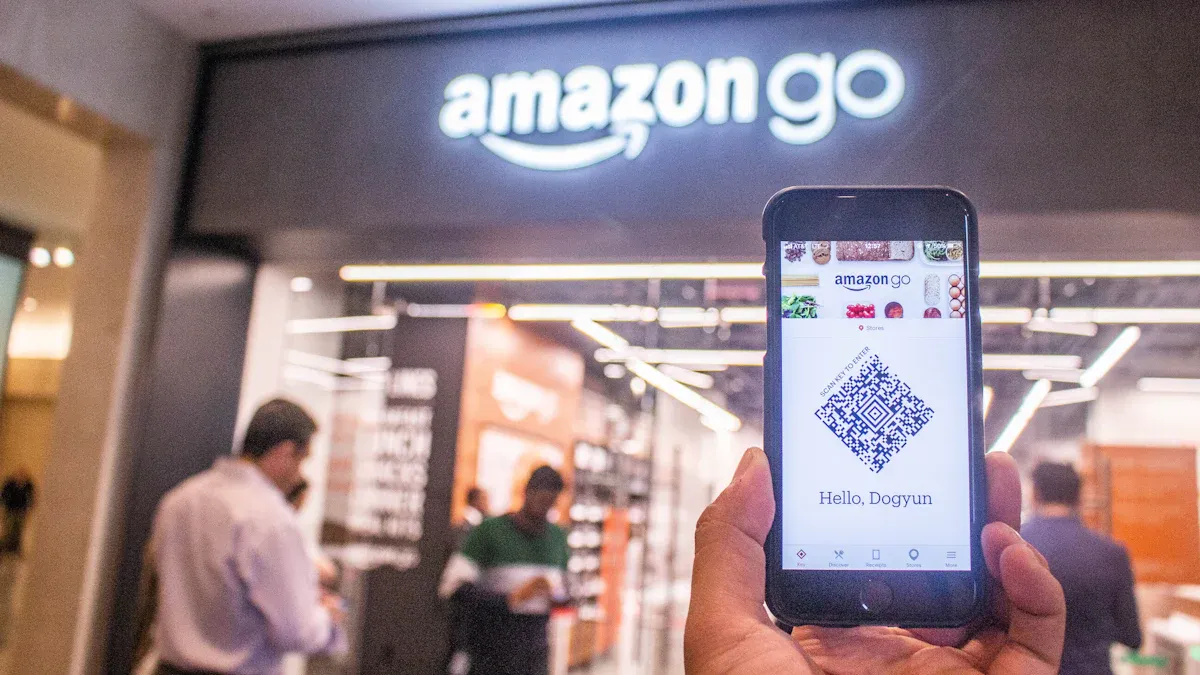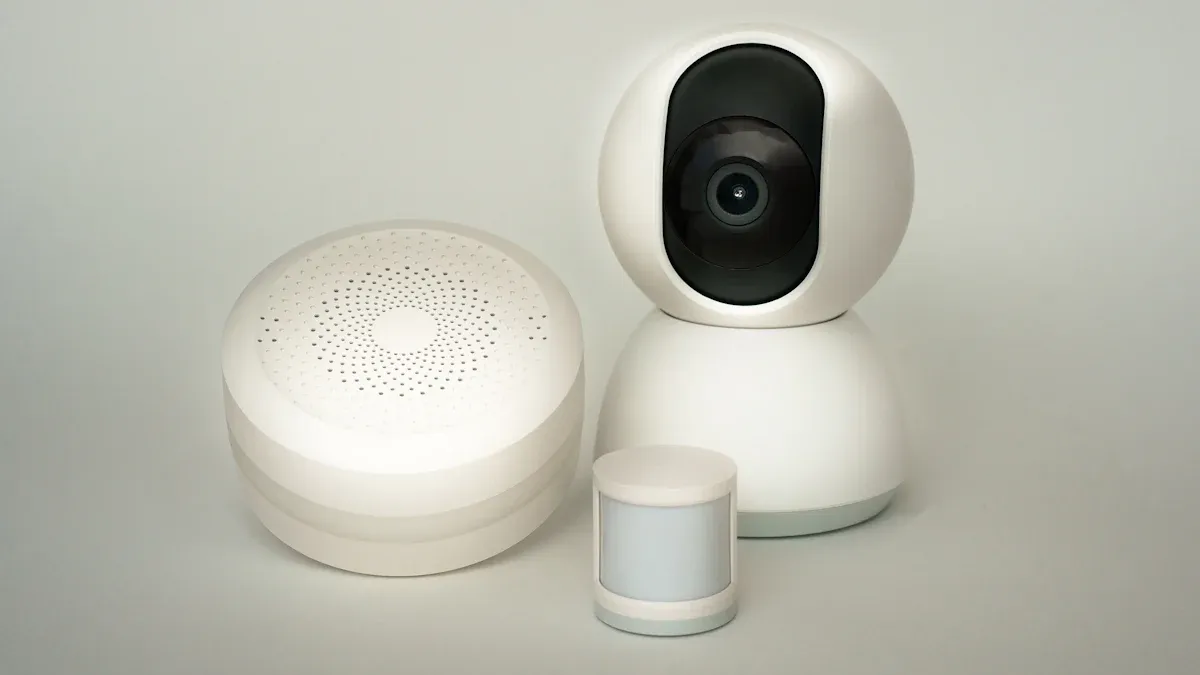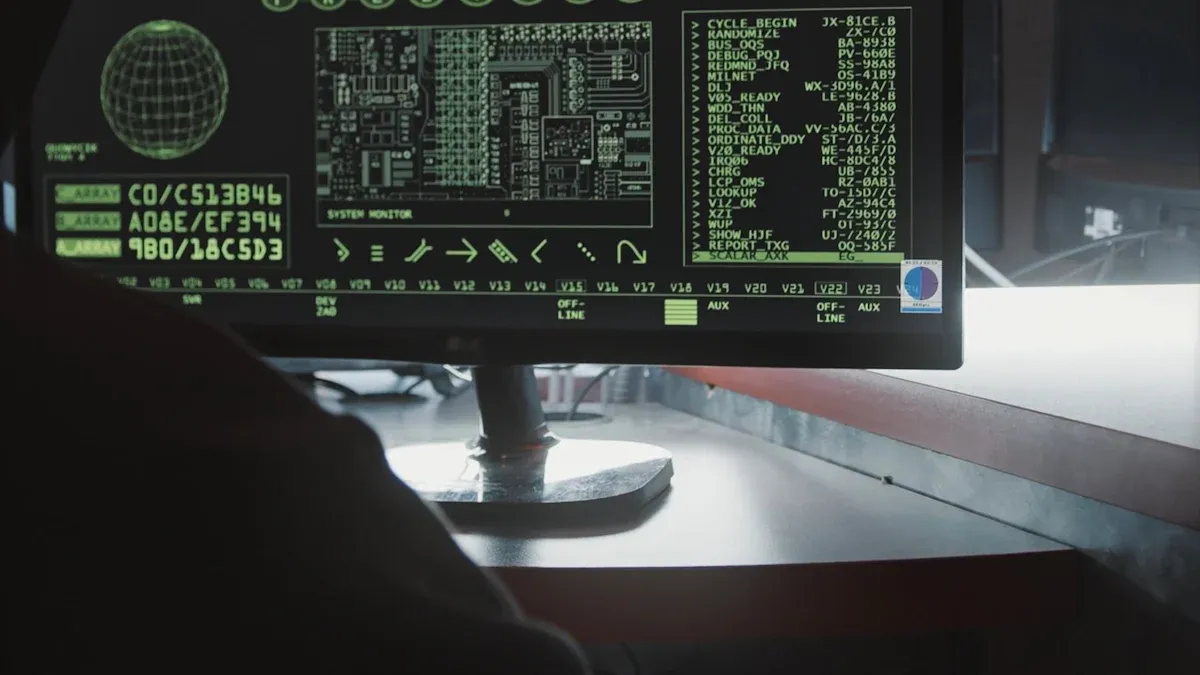How Risk Detection Sensors Work in Cashierless Stores

You enter a cashierless store and risk detection sensors turn on fast. These sensors use AI-driven object detection to find threats right away. They look for strange actions, like someone hiding things or standing too long in one spot. The system sends quick alerts to security teams, which helps stop theft and false alarms. With this smart technology, you get a safe and easy shopping trip.
Key Takeaways
Risk detection sensors use AI and cameras to keep stores safe. They look for strange actions and tell workers right away.
These sensors help stop stealing by seeing tricks like hiding things or changing price tags. Stores with these sensors have less shoplifting.
Real-time analytics help the system act fast if there is a danger, like a spill. This makes shopping safer for everyone.
Privacy steps, like hiding your identity and using less data, keep your information safe. Stores only take the data they need.
Shopping in cashierless stores is quicker and easier. You do not wait in line, and the system charges you for what you take.
Risk Detection Sensors in Stores

Definition & Core Functions
When you go into a cashierless store, risk detection sensors start right away. These sensors use cameras, RFID tags, and AI to watch the store. Their main job is to keep you safe and stop loss. These systems do more than just watch people. They also study what happens as it happens and act fast.
Here is a table that shows what risk detection sensors do:
Function | Description |
|---|---|
Surveillance Systems | High-definition cameras and computer vision watch the store. They help stop theft and track what people do. |
AI models find suspicious actions and send alerts about possible theft or fraud. | |
Access Control | Biometric checks or smartphone apps let only registered customers in. This makes the store safer. |
Risk detection sensors do more than just record video. They use smart technology to spot normal shopping and risky actions. For example, if someone hides an item or acts strange, the system can warn staff to check.
Role in Cashierless Environments
In a cashierless store, there are no cashiers watching you. Risk detection sensors take over this job. They watch how you handle products. If you pick up something and put it back or give it to a friend, the sensors notice.
AI surveillance covers every part of the store, so nothing is missed.
Automated alerts tell staff if the system sees something strange.
Behavioral analysis helps the system know if you are shopping normally or acting suspicious.
Shopping in these stores feels easy and private. Still, the sensors work hard in the background. They face tough jobs, like tracking groups who split up or people who look at and put back fresh food. The technology must keep you safe but also protect your privacy. This helps you feel comfortable while the store stays secure.
Risks Detected
Theft & Shoplifting
When you shop in a cashierless store, you might wonder how the store keeps items safe. Risk detection sensors play a big role in stopping theft and shoplifting. These sensors watch for common tricks that people use to steal. Here are some of the most frequent methods:
Concealment: Hiding items in bags, clothing, or strollers.
Price Tag Switching: Swapping price tags to pay less.
Walk-Outs: Leaving the store with unpaid goods.
Refund Fraud: Returning stolen items for cash or credit.
Distraction Theft: Working in groups to distract and steal.
You often see electronics, cosmetics, clothing, medications, and alcohol targeted the most. Stores that use electronic surveillance systems see a 50-70% drop in shoplifting. The sensors act as a warning to thieves and help staff respond quickly. They also track inventory, which helps stop theft from inside the store.
Fraud & Suspicious Behavior
Risk detection sensors do more than just catch shoplifters. They also spot fraud and strange actions. If someone tries to return an item they never bought, the system can flag it. The sensors notice if a person moves in odd patterns, spends too much time in one spot, or tries to avoid cameras. You help keep the store honest just by shopping normally, while the system quietly checks for anything unusual.
Safety Hazards
You may not think about safety hazards when you shop, but risk detection sensors do. If a glass bottle falls and breaks, the sensors can spot the spill right away. They alert staff so someone can clean up before anyone slips and gets hurt. This quick response is important, especially when there are not many workers in the store. You stay safer because the system acts fast in emergencies.
Technology

AI & Machine Learning
You see AI and machine learning at work every time you visit a cashierless store. These smart systems help risk detection sensors spot problems fast. AI connects to video and scanning tools to watch what happens in the store. It learns from patterns and can tell when something does not look right. For example, if someone tries to cheat the self-checkout, AI can flag the action and alert staff.
AI tracks how you shop and predicts what might go wrong.
It finds odd actions, like skipping a scan or moving items in strange ways.
The system sends alerts to staff if it sees possible theft or fraud.
AI-powered systems use computer vision and sensor fusion to follow which products you pick up. When you leave, the system charges you for what you took. This makes shopping faster and easier. AI also helps keep the store safe by watching for risky behavior.
Machine learning makes these systems smarter over time. The more data they see, the better they get at finding threats. Here is a table that shows how machine learning helps stores:
Benefit | Description |
|---|---|
Advanced Analytics | Finds threats by studying lots of data. |
Real-time Monitoring | Watches for trouble as it happens. |
Predictive Capabilities | Warns about risks before they happen. |
Theft Prevention | Spots and stops theft by noticing strange actions. |
Inventory Management | Helps keep track of stock and avoid losses. |
Enhanced Security Measures | Makes the store safer for everyone. |
Computer Vision
Computer vision acts like the eyes of the store. High-resolution cameras watch how you move and what you pick up. The system adds items to your virtual cart as you shop. You do not need to wait in line or scan each item.
Computer vision tracks your movements and product choices in real time.
It helps manage inventory by giving instant updates on what is on the shelves.
The system sorts items and makes sure you get charged for what you take.
Recent advances in computer vision make risk detection sensors more reliable. The technology can now spot unusual actions, like someone trying to hide an item or groups crowding one area. Vision AI checks for problems like mis-scans or too many people in one spot. Stores using computer vision have seen big drops in theft, sometimes up to 60%.
Tip: Computer vision helps security teams find patterns and spot trouble before it gets worse. Neural networks, a type of AI, flag risky behavior so staff can act quickly.
Real-Time Analytics
Real-time analytics give you a safer and smoother shopping trip. The system uses data from sensors to spot problems right away. If someone tries to leave with an item they did not pay for, the system notices and sends an alert.
Real-time analytics use edge computing to process data instantly.
Staff get alerts right away if the system finds something wrong.
The system checks for unscanned items or scams at the checkout area.
AI-supported analysis also finds risk zones in the store. This helps stop losses and keeps everyone safe. When you shop, you may not notice these tools, but they work in the background to protect you and the store.
Autonomous robots and data labeling also play a role. Robots can patrol aisles, check for spills, and restock shelves. Data labeling helps AI learn what normal and risky actions look like. This makes the whole system smarter and more accurate.
Benefits & Challenges
Security & Efficiency
Shopping is safer when stores use risk detection sensors. These systems help staff find problems fast and keep things running well. AI-powered cameras can spot patterns and warn staff about strange actions. You also get faster answers because cameras save videos you can search. Stores make fewer mistakes and catch more fraud, with accuracy going up by over 50%. Computer vision helps save time and lets staff do more important jobs.
Improvement Type | Description |
|---|---|
Searchable Footage Library | AI-enabled cameras make it easy to find key moments in saved videos. |
Pattern Recognition | Cameras with deep learning spot patterns and find problems right away. |
Suspicious Behavior Monitoring | AI-powered cameras warn staff about possible shoplifting. |
Improved Fraud Detection | AI systems make fraud detection over 50% more accurate. |
Operational Efficiency | Computer vision saves time and helps staff work better. |
Risk detection sensors also help stores spend less money. They stop theft, help track inventory, and make running the store easier. Real-time monitoring means fewer losses and better use of store resources.
Customer Experience
You get a smooth shopping trip with short lines and quick checkouts. The system tracks what you pick up, so you do not have to scan each thing. But some shoppers worry about mistakes, like being charged for the wrong item or missing a purchase. Learning new apps or checkout-free systems can also be confusing at first.
Concern Type | Description |
|---|---|
Accuracy | Mistakes with product scans or charges can happen. |
Privacy | Some shoppers worry about being watched and losing privacy. |
Customer Experience | New technology can be hard to learn for some people. |
Tip: If you have trouble with the system, staff can help fix mistakes or answer your questions.
Privacy & Limitations
You might wonder how stores keep your personal data safe. Many stores use privacy tools like anonymization, informed consent, and data minimization. They only collect what they need and use strong security, like encryption and access controls. Stores also teach workers to handle data safely and may ask outside experts to check their privacy rules.
Privacy Safeguard | Description |
|---|---|
Anonymization and Pseudonymization | Stores remove or hide personal details to protect your privacy. |
Informed Consent | You give permission before your data is collected. |
Data Minimization | Stores only collect the data they need. |
Robust Data Security Measures | Strong security keeps your data safe. |
Transparent Data Handling Policies | Stores explain how they use and delete your data. |
Employee Training and Awareness | Staff learn how to keep your information private. |
Third-Party Auditing and Certification | Outside experts check that stores follow privacy rules. |
Even with these steps, no system is perfect. Sometimes, sensors make mistakes or miss something important. Stores try to fix these problems, but you should know how your data is used.
You notice risk detection sensors help make stores safer. AI and sensor fusion let stores find theft and watch products. These tools also help keep you safe. Stores try to use new tech but still protect your privacy.
Challenge Type | Description |
|---|---|
Security Risks | |
Privacy Concerns | Stores use strict rules and collect only needed data. |
In the future, stores will have even smarter AI. They will use real-time checks and better object detection. This means tracking will be more exact and risks will be found faster.
FAQ
How do risk detection sensors know if you are stealing?
Sensors use AI and cameras to watch your actions. If you hide items or skip scanning, the system sends alerts. You help keep the store safe by shopping normally.
Will risk detection sensors record your personal information?
Most stores use anonymization. They only collect data needed for security. You can ask staff about privacy policies if you have concerns.
What happens if the system makes a mistake?
If you get charged for the wrong item, you can talk to staff. They fix errors quickly. Stores train workers to handle these issues.
Can you shop without being watched all the time?
Sensors focus on safety, not spying. You get privacy through data protection tools. Stores use strong security to keep your information safe.
See Also
Discovering Cashierless Shopping Solutions With Cloudpick Today
Navigating Walgreens Self-Checkout: Benefits And Hurdles Faced
Upcoming Changes To Walmart Self-Checkout By 2025 Revealed
